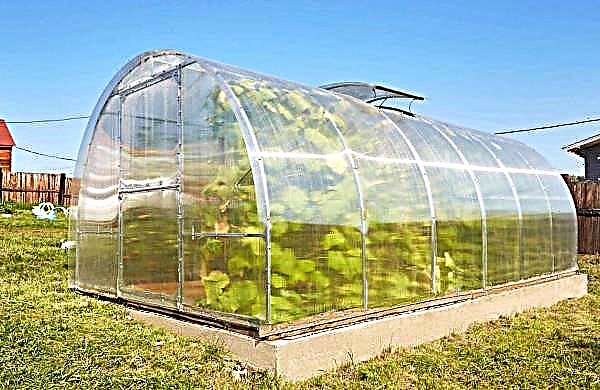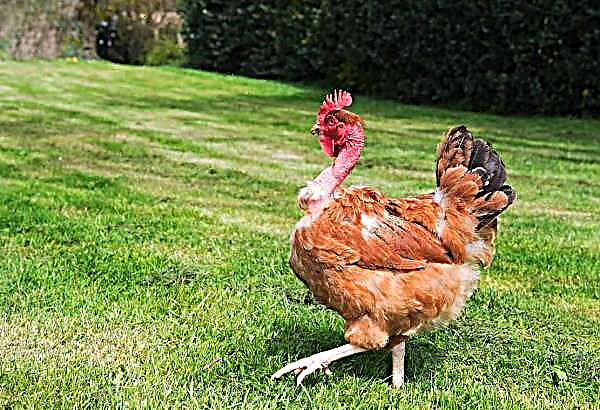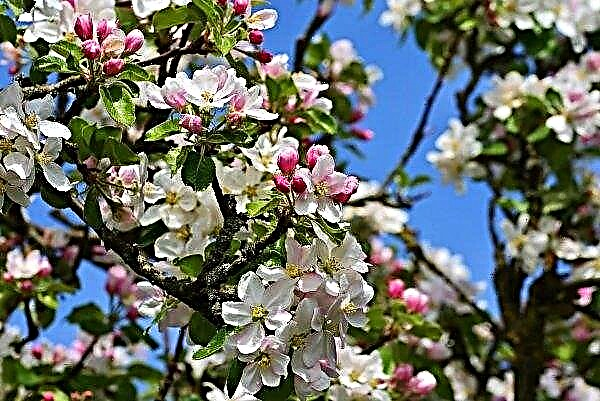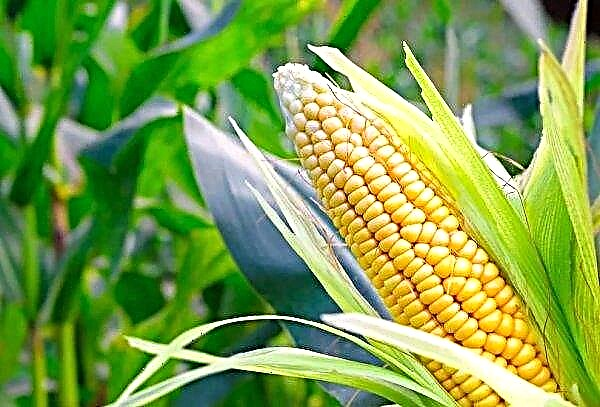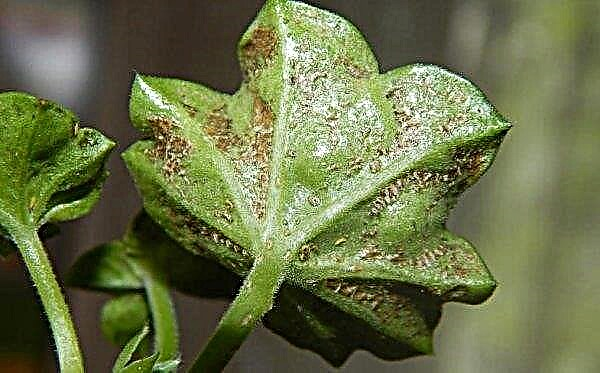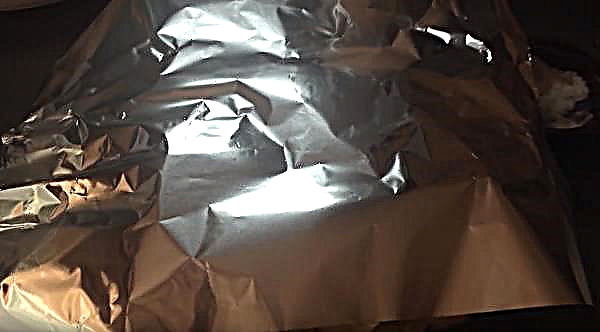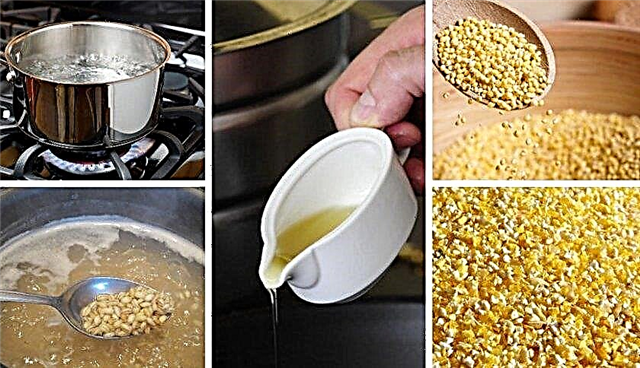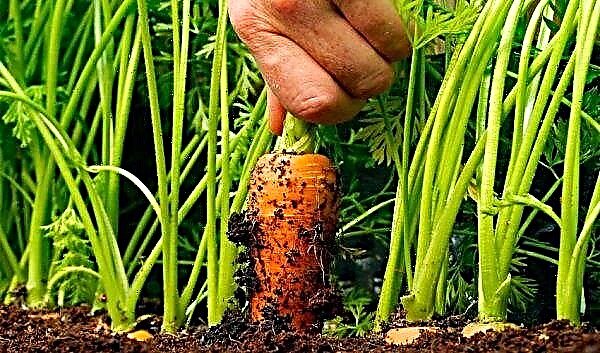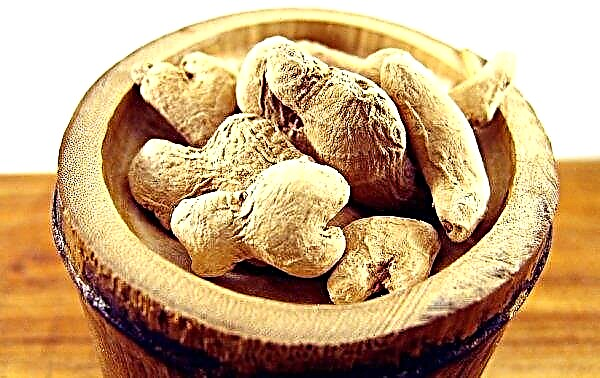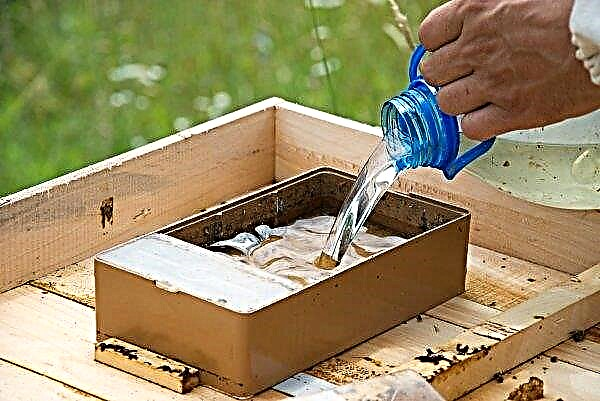Cabbage is a great ingredient for salads that are prepared for the winter. Sometimes this vegetable is the main dish, and in some cases - additional. This article discusses the basic recipes of cabbage salad with various related products.
Ingredient preparation
Before preparing vegetables for pickles for the winter, you must carefully select the appropriate copies so that the cabbage does not ferment, the carrots are not dry and "wooden", and everything turned out delicious.
Did you know? Cabbage has been in the human diet since at least the Bronze Age. Excavations revealed the presence of this vegetable back in those days.
Cabbage is selected from late summer or autumn varieties, the density of the head should be high, and the quality of even the top leaves should be marketable. In preparation for shredding, several leaves are removed at once, even from an apparently healthy head of cabbage. This must be done in order to remove the outer cover with pests and dust. Peel carrots, tomatoes, cucumbers, zucchini or eggplant (depending on the recipe), wash, cut.

Step-by-step recipes for preparing cabbage salad for the winter
The salad is chopped and mixed in a large saucepan, after which it is laid out in jars or bottles. Consider the basic recipes for salad dressing:
- normal without sterilization;
- autumn with vegetables;
- spicy in Korean.
At the end of each recipe is a photo of how approximately these delicious dishes made from them should look like. If everything is prepared correctly, then your household and guests, having tasted these dishes, will lick their fingers.
Simple recipe without sterilization

2-3 cans per 1 l1 hour
White cabbage
2 pcs.
Nutritional value per 100 g:
- Cabbage is peeled from the upper leaves and chopped. The smaller the cut, the better.
- Carrots and onions are washed and peeled. The carrots are rubbed on a coarse grater, and the onions are cut into rings or small cubes.
- In a large pot or large bowl, mix all the vegetables thoroughly.
- Mixed cut tightly laid out on sterilized jars.
- The contents of the cans are poured with boiling water, covered with lids and left for 10-15 minutes.
- Water is drained, and the containers are poured with another portion of boiling water for 10 minutes.
- The water is drained again, and sugar, salt and vinegar are added to the jars.
- After pouring water for the third time, the cans are rolled up with lids and wrapped until cool.

Autumn salad with vegetables

3 cans per 1 liter 1.5 hours
Nutritional value per 100 g:
- Choose juicy dense cabbage, carrots - with sweetness, bell pepper - juicy and red.
- Chop the cabbage, rub the carrots on a coarse grater, cut the pepper into small strips.
- The whole mass is placed in a large container, mixed, salted, continuing to mix.
- Sugar, vinegar are added and everything is mixed again.
- Vegetable mass is laid out on sterilized jars, covered with lids.
- Banks are put in a pot of boiling water, the cooking process lasts for 15 minutes.
- The cooked salad is rolled up, wrapped upside down until it cools completely and stored in a dark place.
Important! After adding salt, gently rub it with your hands with cabbage in order to accelerate the formation of cabbage juice.

In Korean

3 cans per 1 liter 2.5 hours
Nutritional value per 100 g:
- Fresh cabbage is peeled from the upper leaves and cut so that square pieces of 2 × 2 cm are obtained.
- Peel the carrots, rub on an ordinary grater or intended for Korean carrots.
- All vegetables are mixed in a separate large container (bowl, pan, bowl), salted and left for 20 minutes to let the juice flow.
- In the cut in the middle, a depression is made where a mixture of peppers or a set of spices for Korean carrots is poured, vinegar is poured and sugar, chopped herbs and chopped garlic are added.
- The deepening is not closed, and the mass is not stirred yet.
- At this time, make onion frying in oil, which then needs to be introduced into the recess in hot form along with the oil, after which all vegetable variety is mixed.

The whole mixture is infused and cooked for several hours in the refrigerator, after which it is laid out in sterilized jars and rolled up or closed with steamed nylon lids.
Storage methods
Dishes from cabbage are perishable, they may crunch at the beginning of the expiration date and then become acidic, therefore their long-term storage for more than one winter season is impractical. Otherwise, the cabbage will continue its natural fermentation and the banks will begin to “explode”.
Did you know? In the northern and middle part of Russia, cabbage occupies 50% of the cultivated land, since the culture is resistant to any climatic conditions.
The best home storage place is the cold cellar, where the dish will last as long as possible. In urban conditions, cans can be stored on the balcony, but the temperature conditions must be taken into account - in cold weather, the workpieces should be covered with warm clothes, and when the warm period begins, open windows to prevent direct sunlight from being preserved.
Salads with cabbage are a great addition to both a regular diet and a festive one. There are many recipes for their preparation - it all depends on taste preferences and financial capabilities.


